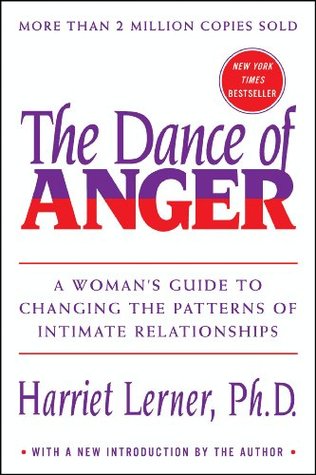More on this book
Community
Kindle Notes & Highlights
Read between
September 5 - September 29, 2024
De-selfing means that too much of one’s self (including one’s thoughts, wants, beliefs, and ambitions) is “negotiable” under pressures from the relationship.
Like a seesaw, it is the underfunctioning of one individual that allows for the overfunctioning of the other.
“It’s not worth the fight” is a familiar phrase that protects many of us from confronting the challenge of changing our behavior.
Ineffective fighting allows us to stop the clock when our efforts to achieve greater clarity become too threatening.
When a woman clarifies the issues and uses her anger to move toward something new and different, then change occurs. If she stops overfunctioning for others and starts acting for herself, her underfunctioning man is likely to acknowledge and deal with his own anxieties.
behavior of one partner maintains and provokes the behavior of the other.
By doing the work of expressing the neediness, clingingness, and wish for closeness for both partners, pursuers make it possible for distancers to avoid confronting their own dependency wishes and insecurities.
Sandra put so much effort into trying to change Larry that she obscured from herself her own power to act and make choices. And this, in the end, is the only real power we have.
When emotional intensity is high in a family, most of us put the entire responsibility for poor communication on the other person.
However, as we have seen, venting anger does not solve the problem that anger signals.
If, however, our goal is to break a pattern in an important relationship and/or to develop a stronger sense of self that we can bring to all our relationships,
essential that we learn to translate our anger into clear, nonblaming statements about our own self.
Separation anxiety may creep up on us whenever we shift to a more autonomous, nonblaming position in a relationship, or even when we simply consider the possibility.
In some instances, however, our problem is not the fear of clarity but the absence of it.
Anger is a tool for change when it challenges us to become more of an expert on the self and less of an expert on others.
If we feel chronically angry or bitter in an important relationship, this is a signal that too much of the self has been compromised and we are uncertain about what new position to take or what options we have available to us. To recognize our lack of clarity is not a weakness but an opportunity, a challenge, and a strength.
If, however, we do not use our anger to define ourselves clearly in every important relationship we are in—and manage our feelings as they arise—no one else will assume this responsibility for us.
Most of us react strongly to family members—especially our mothers—but we do not talk to them in depth and gather data about their experience.
We are responsible for our own behavior. But we are not responsible for other people’s reactions; nor are they responsible for ours.
Remember—assuming responsibility for the self means not only clarifying the “I” but also observing and changing our part in the patterns that keep us stuck.
women more frequently handle anxiety by fusion and emotional overfunctioning (thus, sacrificing the “I” for the “we”).
When we overfunction for another individual, we end up very angry, and in the process, we facilitate the growth of no one.
Relationships are circular (A and B are mutually reinforcing) rather than linear (A causes B or B causes A). Once a pattern is established in a relationship, it is perpetuated by both parties.
we reduce anxiety in one relationship by focusing on a third party, who we unconsciously pull into the situation to lower the emotional intensity in the original pair.
Yet all of us are vulnerable to intense, nonproductive angry reactions in our current relationships if we do not deal openly and directly with emotional issues from our first family—in particular, losses and cutoffs.
When two people gossip, they are having a relationship at the expense of a third party. That’s a variation of the triangle.
never helps anybody’s performance to talk about them rather than to them.
The exact words you choose are far less important than your ability to maintain a warm, nonjudgmental, nonreactive position.
If you are an underfunctioner, guard against presenting your problem as if you are just a bundle of weakness and vulnerability; if you are an overfunctioner, try not to make it appear as if you have it all together and don’t need anything from anyone.
Parents and grandparents do not think to tell us their own experience. Instead, they tell us what they think we should hear or what they believe will be helpful to us.


